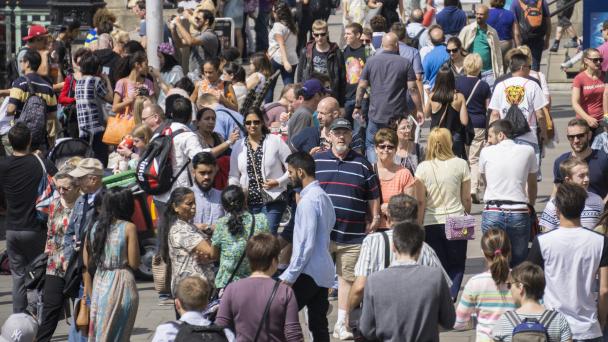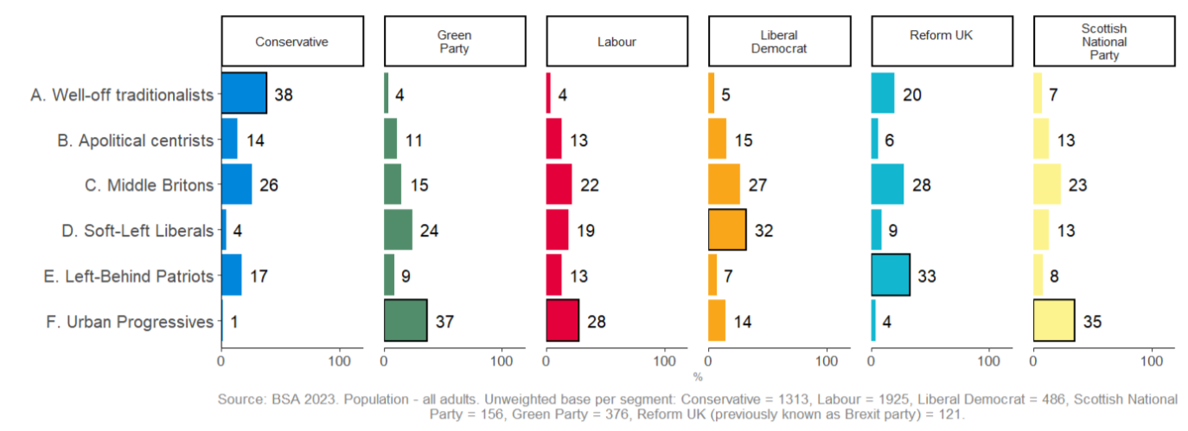Dividing lines: a classification of British voters


The National Centre for Social Research (NatCen) has today named six categories of UK voters, defined by their answers to twelve key questions. The groups have shared characteristics – such as social class, gender, levels of education, and geographical location – as well as aligned views on key political issues such as the economy, immigration and climate change.
The underlying data comes from the British Social Attitudes (BSA) survey, the ‘gold-standard’ in tracking British public opinion, the latest iteration of which will be released in full next week.
The six new voter types, which have informed the BBC's 'Undercover Voters' project, are:

Professor Sir John Curtice, Senior Research Fellow at NatCen and Professor of Politics at Strathclyde University, said: “Much of the commentary on the election focuses on questions of performance. But elections are also influenced by voters' values and their perceptions of politics and politicians. The electorate is not just divided between 'left' and 'right', but also between 'liberals' and 'authoritarians', while many people sit in the middle and are not especially interested in politics. This poses particular challenges for the two main parties who will have to reach out to voters well beyond their own 'comfort zones’ to succeed.”
This is new analysis of UK voters based on the British Social Attitudes (BSA) survey. BSA doesn’t rely on people opting in, rather it randomly selects members of households across the country, thereby generating a representative picture of the current electorate, and avoiding biases around political engagement or affiliation. Similar methods are used in the Pew Research Center’s US voter typology, a popular framework for examining US politics beyond simple Democrat-Republican partisanship.
Lovisa Moller, NatCen’s Director of Analysis, said: “We need a more nuanced understanding of dividing lines in British politics. Crucially, we also need to ensure that the labels and groupings that guide our thinking don’t leave out those less politically engaged and less inclined to vote, who may not be so well captured by most polling data. It is our hope that this will help those interested in politics better understand how British voters think and feel about social and political issues that matter.”
Receive a regular update, sent directly to your inbox, with a summary of our current events, research, blogs and comment.
Subscribe